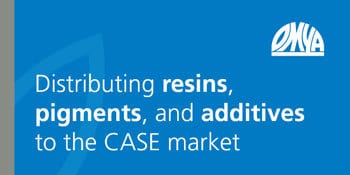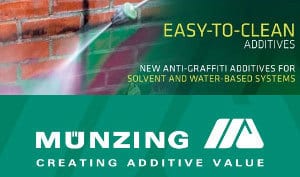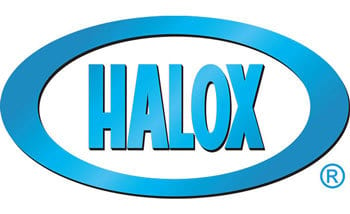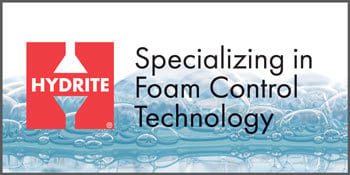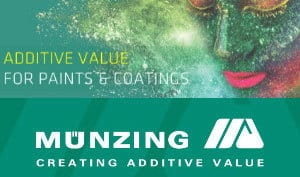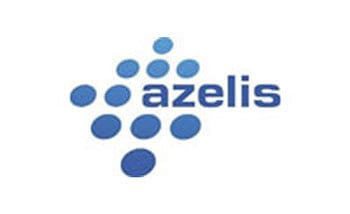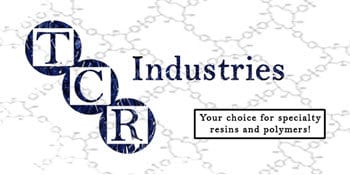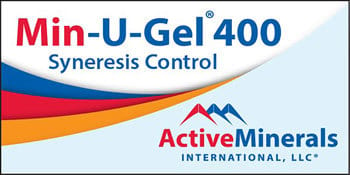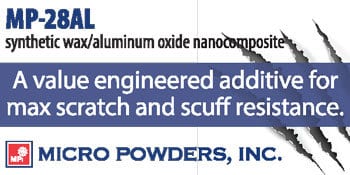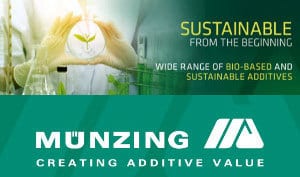Ready to proof -- Clare 4/21/22
Clare, please add the intro paragraph below back in from last year.
PCI’s online Materials Directory has just launched. The Directory features suppliers and distributors of the multitude of additives, resins and pigments used to formulate and manufacture coatings. Below is a selection of some common products featured in our Directory, along with a few of the suppliers of these products. Click on the material headings below to link to that section in our Directory. And click on the company logos to view those specific listings.
2023 Materials Directory Definitions
Photo: deliormanli, iStock / Getty Images Plus, via Getty Images
PCI’s online Materials Directory has just launched. The Directory features suppliers and distributors of the multitude of additives, resins and pigments used to formulate and manufacture coatings. Below is a selection of some common products featured in our Directory, along with a few of the suppliers of these products.
Click on the material headings below to link to that section in our Directory. And click on the company logos to view those specific listings.
Acrylic Resins, Misc. Acrylic
An acrylic resin is a polymeric material (in solution, dispersion or solid) containing acrylic monomers. These monomers are usually esters of acrylic, methacrylic acids or their derivatives, and can be functionalized by introducing different chemical groups (R groups). Other monomers can also be incorporated in the polymer chains in order to obtain resins with different properties or lower cost.
In general, acrylic resins show good chemical and photochemical resistance. They are commonly used in many different applications, from solvent-based and water-based industrial coatings to architectural coatings.
Key parameters of an acrylic resin are: Tg (glass transition temperature), average molecular weight of the polymers, and polymer molecular weight distribution. These parameters have an impact on the resin properties (viscosity, dispersion, etc.) and on the final film/coating obtained (flexibility/hardness, etc.). (Source: SpecialChem)
Additives
Additives belong to a broad and diffuse category of key components in a coating formulation. They comprise a small percentage of the coating formulation — their use level rarely exceeds 1 or 2%, and the total level of all additives in a formulation seldom exceeds 5% of the total product. Their impact, however, is significant as they contribute to the ease of manufacture, the stability of the coating in the package, ease of application, quality and appearance of the final film.
Additive function is almost always very specific in nature. Some additives are multipurpose; for example, they may be important to the manufacturing process as well as to the coating’s performance. In recent years, more multipurpose additives have been developed, thus allowing the use of fewer additives in many formulations. Occasionally the use of one additive will require the use of another to counter some undesirable effect of the first.
Some additives are proprietary products with highly specific functions that work well in some systems but cannot be used in others. In addition, because of the proprietary nature of many additives, their chemical composition is not disclosed. This can make general recommendations difficult as the lack of structural knowledge means that additive substitutions cannot be made on the basis of fundamental structural chemistry. (Source, 2012 Additives Handbook, By Dr. Joseph V. Koleske, Robert Springate and Dr. Darlene Brezinski)
Additives for Water-Based Systems
Waterborne coatings use water as a solvent to disperse the resin and other ingredients, thus making these coatings more environmentally friendly than their solvent-based counterparts. As the world pushes for more eco-friendly products, waterborne coatings are being increasingly used in all segments of the coatings industry. The task for coatings manufacturers is to develop water-based coatings that meet the same performance parameters as solvent-based coatings do, as water performs differently and introduces unique challenges. There are a multitude of additives designed specifically for all types of water-based coatings that can help formulators address these challenges and introduce performance attributes that meet or exceed solvent-based products. (Source: PCI Magazine)
Carbon Black
Carbon black is a black special chemical that is available as powder or beads. It is manufactured through highly controlled processes and contains more than 95 percent pure carbon and other components including oxygen, hydrogen, and nitrogen. The black particles are 10 nm to approximately 500 nm big, and fuse into chain-like aggregates that define the structure of individual carbon black grades. Depending on the production process, carbon black types differ in size, surface chemistry, porosity and many other characteristics. During the after-treatment process, the oxygen percentage within the carbon black can be changed according to the required needs.
Carbon black is used in a multitude of industries. By enhancing the physical, electrical and optical properties of various materials, carbon black brings the final product to the top of its performance. It can be blended with additives, elastomers or binding agents and integrated into the customers' existing formulas, or it can be pre-processed in a form called "preparation". Preparation is a mixture of carbon black and other additives and streamlines production. (Source: Orion Engineered Carbons)
Corrosion Inhibitors
Corrosion inhibitors are compounds that improve a coating’s ability to protect aluminum, brass, copper and steel. The term refers to a variety of materials used to prevent the oxidation of metals, including surface treatments, undercoats, and additives or elements alloyed to the surface of the metal. Corrosion poses a major potential problem for metal surfaces that are typically protected through the use of zinc-rich coatings, the use of anti-corrosive pigments and the application of a barrier coat.
Flash rust inhibitors are often used to prevent in-can corrosion during the storage of waterborne coatings. Inhibitors also may prevent the corrosion of ferrous metals during the drying time of waterborne coatings. Sodium nitrite typically has been used in the past. Other types of materials include the following: organic zinc complexes, salts of dodecylnaphthalenesulfonic acid, ammonium benzoate, 2-aminomethoxypropanol and amine neutralized thiosuccinic acid. (Source: 2012 Additives Handbook, By Dr. Joseph V. Koleske, Robert Springate and Dr. Darlene Brezinski)
Defoamers, Misc. Defoamers
Defoamers, deaerators and antifoaming agents are all additives used to prevent, reduce, or eliminate foam in a coating, whether in-can, during application, or in the final film. While these terms are used interchangeably, they are different. Defoamers are designed to work at the surface to break bubbles already created. Deaerators are designed to work in the bulk liquid to move air bubbles to the surface so defoamers can break them. Antifoaming agents are designed to prevent foam from forming. While an additive is designed to do one, they will all tend to do all three, but with varying efficiency. (Source: Mike Praw, Indorama Ventures)
Lampblack
Lampblack is soot produced by burning oil or other combustible organic materials. Soot is basically pure carbon, sometimes containing small amounts of unburned material or other combustion products. The pigment is very stable, as are all carbon blacks. It is lightfast and compatible with all other pigments. Lampblack is used as a tinting carbon black with high stability to pigment separation. (Sources: ColourLex; The Cary Company)
Pigment Dispersions (Aqueous), Color Concentrates
Aqueous dispersions are pigments dispersed in water ready to be mixed with water-based mediums. Pigment concentrates (pigment pastes) are monopigmented systems with as high as possible pigment content and as little as possible binder (grinding resin). They are used in two ways in the production of coatings — for tinting and for production. (Sources: Natural Pigments; BYK)
Pigments, Dispersions
Pigments are finely ground natural or synthetic, insoluble particles used to impart color when added to paint and coating formulations. They are also used to impart bulk or a desired physical and chemical property to the wet or dry film. Some of the main pigment classes include: organic pigments, inorganic pigments, functional pigments, and special effect pigments.
Pigment dispersions are dry pigments dispersed in liquid material that are stabilized using resins or surfactants/additives to minimize reagglomeration, a phenomenon where the pigments come back together to form “lumps”. They can contain water, solvent, or based on a resin that is liquid at room temperature. Pigment dispersions often have relatively high pigment concentrations and are used in additive quantities to impart color in a wide variety of products. The term “pigment dispersions” is often used synonymously with colorants, color concentrates, and pigment preparations. (Sources: SpecialChem; Chromaflo)
Resins and Polymers
Resins are typically viscous substances that convert into rigid polymers through a curing process using heat, setting agents or light. Resins bind all of the additives, pigments and solvent in a coating together and provide desired performance properties such as adhesion, chemical resistance and substrate protection. Resins are naturally occurring but are often made synthetically. There are a variety of resin types, such as acrylic, alkyd, epoxy, phenolic, polyamide, polycarbonate, polyester, polyethylene, polypropylene, polystyrene, polyurethane, and silicone. The resin is typically what gives the coating its name, like acrylic or epoxy. (Source: Brenntag; Issuu Inc.; Thomas Publishing Co.)
Solvents
The term “solvents” refers to a class of chemical compounds described by function – the term derives from Latin, meaning roughly to “loosen.” In chemistry, solvents — which are generally in liquid form — are used to dissolve, suspend or extract other materials, usually without chemically changing either the solvents or the other materials. In paints, solvents dissolve or disperse the components used in the paint formulation, to make paint the desired consistency for application and to avoid clumps or globs.
The chemical classification of a solvent is based on its chemical structure.
- Hydrocarbon solvents are classified into three sub-groups based on the type of “carbon skeleton” of their molecules, giving us the aliphatic, aromatic and paraffinic solvents families. Paint thinner is a common example of a hydrocarbon solvent.
- Oxygenated solvents are produced through chemical reactions from olefins (derived from oil or natural gas), giving us the following sub-groups: alcohols, ketones, esters, ethers, glycol ethers and glycol ether esters.
- Halogenated solvents are solvents that contain a halogen such as chlorine, bromine or iodine.
(Source: ChemicalSafetyFacts.org)
Surface Modifiers
A surface modifier is an additive intended to modify a particular surface property. Typical functions of surface modifiers are to:
- reduce the effect of friction/surface tension of the film;
- improve abrasion resistance;
- alter a coating’s “feel”;
- modify surface appearance; and
- enhance other performance properties.
(Source: 2012 Additives Handbook, By Dr. Joseph V. Koleske, Robert Springate and Dr. Darlene Brezinski)
Thickening Agents and Rheology Modifiers
A material used to thicken (increase the viscosity of) a liquid. Thickening agents provide the proper consistency to coatings, aid in applying an adequate thickness of coating to a substrate, and inhibit phase separation and prevent pigment settling. Basically, thickening agents increase the viscosity at moderate shear rates and thereby increase the coating’s resistance to flow during mixing, pouring and stirring. They are important to all phases of the manufacturing process, storage and application.
Rheology modifiers are chemicals that alter the deformation and flow characteristics of matter when it is under the influence of stress. A basic understanding of coatings rheology is essential to the development of acceptable flow properties in a coating. In coatings formulations and manufacturing, rheological additives control rheology.
The rheology (viscosity as a function of applied shear) of a coating determines many of the properties such as in-can appearance, anti-settling of pigments, color stability, application performance (including sag and spatter resistance), brush or roller loading, brush drag, film build, and flow and leveling. (Source: 2012 Additives Handbook, By Dr. Joseph V. Koleske, Robert Springate and Dr. Darlene Brezinski)
Waxes
The term ‘wax’ encompasses a large range of naturally occurring and synthetic material made from high-fatty-acid esters (typically C36 – C50) or from polymeric compounds (700 <molecular weight<10,000) that differ from fats in being harder and less greasy. It is, however, important to realize that the chemical composition alone does not determine a wax. The term wax is basically a generic term for materials that have the following physical characteristics:
- solid at 20 °C, varying in consistency from soft and plastic to brittle and hard;
- a melting point of at least 40 °C without decomposing, which distinguishes waxes from oils and natural resins; and
- a relatively low viscosity at temperature slightly above the melting point; non-stringing but producing droplets. Droplet formation will exclude most low molecular weight polymers.
With the wax layer or wax particles at the surface of the coating, the coefficient of friction has been altered (decreased) and the desired slip effect has been imparted to the film. This explains why waxes are often classified as ‘surface conditioner additives.’ Wax properties that have the greatest impact on formulation performance include the chemical composition, molecular weight, melting point, hardness and, in the case of emulsions or dispersions, the particle size. When selecting a wax it is important to consider the melting point, particle size and particle size distribution, pH, type of surfactant and order of component addition. (Source: 2012 Additives Handbook, By Dr. Joseph V. Koleske, Robert Springate and Dr. Darlene Brezinski)





